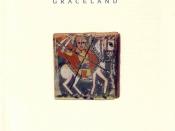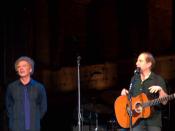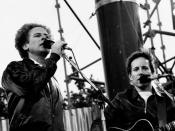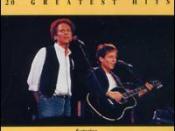Paul Simon accomplished a great deal during the 1970's. Many thought his career was over after the break-up of "ÃÂSimon and Garfunkel' in early 1970. Simon proved them wrong by adding teaching and film making to his impressive list of feats. He also created a string of top-10 hits over the decade, and toured extensively to promote his albums. In the end, Simon and Garfunkel were together again, when they united to perform a concert in NY.
Paul Simon and Art Garfunkel parted ways in what seemed to be the peak of their career. Touring endlessly had begun to take its toll on the duo. Garfunkel had been interested in acting for some time. He was offered the leading role in the film adaptation of Joseph Heller's Catch 22, and he agreed immediately. This angered Simon, who was working on Bridge Over Troubled Water at the time, as the filming conflicted with completing the album.
Bridge was finally finished, but at that point, Simon and Garfunkel were going their separate ways. Simon started his new life by teaching composition and recording techniques at New York University. Soon after that, he started work on his first solo album, Paul Simon, which was released in 1972. It was followed by There Goes Rhymin' Simon in 1973. The album was a success, and was followed by a huge tour, which included a Gospel Choir and a Peruvian folk group. As a result of this, he released Live Rhymin' 1974. His biggest success in the 70's came with the release of Still Crazy After All These Years in 1977, which won two Grammy's. The same year he played a small role in Woody Allen's Annie Hall. Simon continued his venture into film in 1978, when he wrote the screenplay for One Trick Pony. He starred in the movie, and composed the soundtrack for it as well. The movie did not do well commercially, but did receive acclaim from critics. In 1978, Simon created two new songs for his Greatest Hits album. Simon completed his Greatest Hits album. Simon closed the decade by going back to his old friend, Garfunkel, for a concert at Central Park in New York. The concert was released on both video and cassette as Simon & Garfunkel- The Concert in Central Park.
The articles and texts that I read were quite similar in nature. The online biographies from Rolling Stone and excite.com outlined the life of Paul Simon . The Rolling Stone article focused more on the actual albums that he put out, which makes sense, as it is a music magazine. It was really helpful to read about his background, because it gave me an idea of where I wanted to go with my topic. The excite.com biography focused on how he got to where he is today, with focus on the music companies and heavy hitters that helped him along the way. The excite.com biography was a lot more helpful to me than the Rolling Stone article was. Both of the books were very helpful. They provided in-depth information on Simon, and also talked about Simon and Garfunkel. The book Paul Simon-Now and Then answered many of the questions I had on why the duo broke up. This was the first biography ever published on Simon, so it was lacking a lot of information. It only traced Simon's life until early 1973. The most resourceful feature of the book was the appendix. It covered each Simon and Garfunkel album, including track lists and dates. The most helpful book I read was Paul Simon-Still Crazy After All These Years. It was written thru 1988, so it contained a lot of the information that was left out in Now and Then. It contained the history of Simon's film career, which I had trouble finding elsewhere. It also contained a lot of personal information on Simon, which there was no room for in the biography. Another feature that I liked was the way that it was written. It was very easy to read, and proved to be very informative. In Rock and Roll: Its History and Stylistic Development, the chapter on Simon and Garfunkel focused on why they split up, as well as why Simon wanted to continue on his solo career. It also outlined the problems with Garfunkel's solo career, and the success that Simon achieved during the 70's. In The Grammy Interview: Paul Simon was very interesting because it was a modern article. It was also an interview, so it actually gave insight into the mind of Paul Simon. A lot of the interview was on his new material, but Simon also focused on his past accomplishments and how they helped him to get to where he is today.
Paul Simon had a lasting effect on the culture of the 1970's. Many were confused about his future after Simon and Garfunkel broke up. His solo career was successful, a feat that is difficult in and of itself. Simon broadened his spectrum in the 1970's by teaching for a university. He also got caught up in the film movement. He starred in a few movies, wrote a screenplay that was turned into a movie, and composed songs for many soundtracks. He rounded out the decade by reuniting with his old friend for a concert that lives in infamy. Paul Simon proved in the 1970's that it is possible for people to go their own ways, and be successful in the end.





